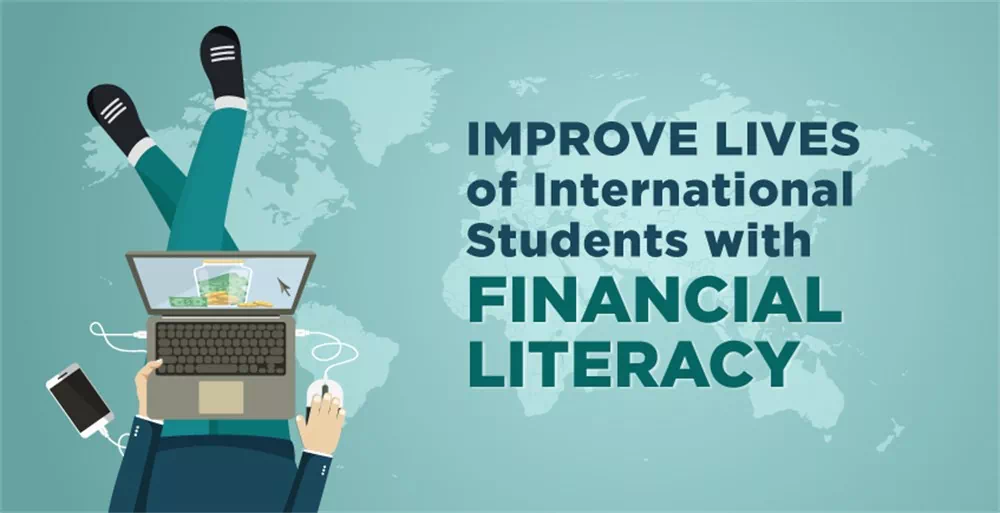Financial wellness has become a global discussion, with organizations, advocates, educators, and consumers taking a stronger interest in understanding what can – and should – be done to improve financial prowess across the board. To champion this challenge, programs geared toward educating individuals on the importance of and methods to achieve financial literacy are growing in scope and reach. In the education arena, many have committed to providing some level of personal finance learning to students on campus as well as the surrounding community, given the recent research that points to the power of educating individuals early on in life. Although some colleges and universities are hitting the mark for boosting finance knowledge throughout their student bodies, some student groups have been overlooked in the process.
In 2016, the Migration Policy Institute reported that 19% of the international student population enrolled in a US college or university for the 2014/15 school year, representing a growth rate of 10% over the previous year. Students choosing to continue their education in the US cite numerous motivating factors, including a high-quality education system, the prospect of finding a lucrative job upon graduation, and the once in a lifetime opportunity to experience a new culture. There is also a significant impact international students have on the economy, with funds flowing in to help support their education initiatives, living expenses, and new careers creating an influx of $32.8 billion in 2015/16 school year alone.
Although international students add substantial value to the US education system and the fiscal landscape of the country overall, the most recent college application season highlighted a decline in interest. The reasons for the reduction in international student applications run the gamut, but some researchers correlate the decrease to the growing challenges faced by this unique student population.
Roadblocks for International Students
Making the transition to the US is difficult no matter a student’s country of origin, educational background, or family support. Being introduced to a new culture can be a shock, and adding in the pressures inherent to earning an undergraduate or graduate degree creates a tremendous amount of stress for international students. The complexities of the US financial system present even more roadblocks for a student’s transition which could ultimately put a damper on their potential during school and after graduation.
Financial mistakes are common among international students simply because there are few resources to assist them in getting up to speed on personal finance management in the US. A number of international students live on a tight budget and a money misstep here or there could lead to detrimental results. Common challenges faced by international students as it relates to their financial picture include:
-
Failing to account for foreign exchange rates – spending power is not the same when currency is stronger or weaker than the US dollar
-
Using credit cards for living expenses – foreign transactions fees and interest charges can add up to an oppressive amount if not planned for ahead of time
-
Higher cost of paying for education – in addition to paying out-of-state tuition rates, banks may charge fees for wire transfers used to pay tuition
-
Misunderstanding foreign student loan options – different countries offer widely varied student loan programs for students studying abroad, and these nuances could end up costing international students hundreds to thousands more in debt over time
-
Not knowing where to begin – bank accounts, accessing cash, and several other common money management tools may be altogether different in the US, leaving students at a loss upon their arrival
How Financial Literacy Helps
International students who choose to study at a US college or university should be able to devote their time and energy toward earning their selected degree, but the stress of not understanding the financial system or the steps that should be taken to ensure financial wellness often shifts the focus. Administrators, financial aid officers, and educators can help reduce the added challenges faced by international students by implementing a well-rounded financial literacy program.
One prestigious university on the east coast is taking on the task of preparing international students for a financially stable life in the US, both throughout their time at the school and after graduation. Through a financial literacy workshop offered only to students from other countries, school administrators are providing invaluable information about the topics most relevant to this unique student body. From selecting the most appropriate type of bank accounts and use of domestic and international credit, to budgeting and planning ahead for international student loan repayment upon graduation, the workshop aims to lift the level of financial literacy for international students, giving them the opportunity to succeed in their degree program without added stress.
Implementing a financial literacy initiative as part of a core college or university offering is a critical component of improving the lives of both in-state and out-of-state undergraduate and graduate students, far beyond their time spent in the classroom. Having a course that focuses specifically on the challenges faced by international students presents the opportunity for colleges and universities to engage with the student body on a higher level while also attracting a greater number of students from other countries to apply and attend. As more institutions create and implement life-changing financial literacy programs, the more value will come for international students attending school in the US.








